Boss Guide (Nighthold II)
This is a follow on from Part I of the guide that contains the first five bosses. The Nighthold is NOT a linear raid, and after you defeat the first three bosses (Skorpyron, Chronomatic Anomaly, Trilliax) you can fight the next five in any order. Elisande and Gul’Dan are unlocked once the preceding bosses are defeated.
Boss strategy is currently geared toward the Normal and heroic versions of the encounters. They will be updated for Mythic over the next few weeks. The Nighthold Boss Guide is split in two.
Nighthold Bosses Part I
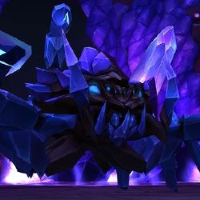

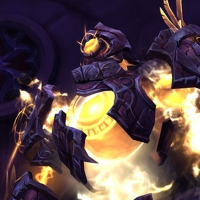
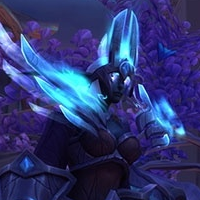
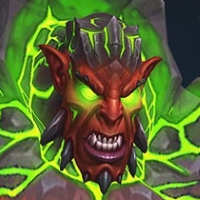
Nighthold Bosses part II

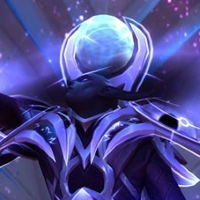


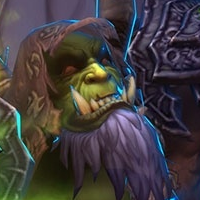
Tichondrius

Debuffs to add to your healing frames: Carrion Plague, Carrion Nightmare, Burning Soul, Brand of Argus (Heroic)
Talents to run: Cultivation, Spring Blossoms / Germination
Boss Guides: Wowhead, Icy-Veins, Fatboss (video)
You might remember this guy from Warcraft 3. Illidan killed him back then, but we’ll have to do the job this time around. Tichondrius is a reasonably quick fight (your first kill will likely take around six minutes) and he is not too complex mechanically. The damage pattern is reasonably predictable with the tanks and anyone afflicted by Carrion Swarm taking the brunt of the hits.
Tips
- The tank damage is very high when multiple adds are up (especially the Felsworn Spellguards). You shouldn’t need to contribute more than a standard HoT stack (Lifebloom, Rejuv, CW on cooldown), but do make sure you don’t get lazy with it.
- During the final phase (When Sightless Watchers start to spawn) all healers should hang to the outside of the ranged group so that you can move out quickly when afflicted with Burning Soul. Healers should dispel themselves rather than each other, since this makes accidental early dispels much less likely.
- Allies with Carrion Swarm will take moderate ticking damage throughout the duration of the debuff, and then a large burst when the boss casts <Seeker Swarm>. They will need to be topped off before this burst hits. Rejuvenation is a perfect foil to the Swarm, and you should be able to hit most of the afflicted targets with Efflorescence.
- Heroic: The <Brand of Argus> can be handled in multiple ways and your healing strategy will vary depending on your strategy. It is possible to avoid blowing them up at all by having ranged DPS and healers spread around the room. In this case the healing requirement for the fight is quite low, and you can instead spend your mana ensuring the <Carrion Plague> targets are suitably topped off.
- If you are detonating the Brand of Argus you will need to do so eight times for every two minute phase. Ensure that no detonation occurs during the Seeker Swarm casts so that nobody in the raid gets one shot. You are likely to take on more of a rejuv blanketing role here.
- Yes, Germination has a bit of value because of the importance of healing on the Carrion Plague targets, however I still recommend Spring Blossoms since you can hit all of the Carrion Swarm targets with Effloresence and you are unlikely to have the mana regeneration to afford the second rejuvenations on all targets.
Mythic
- Mythic Nighthold tips coming soon!
Star Augur Etraeus

Debuffs to add to your healing frames: Icy Ejection, Felburst, Fel Ejection, Felflame, Voidburst
Talents to run: Cultivation, Spring Blossoms
Boss Guides: Wowhead, Icy-Veins, Fatboss (video)
Star Augur is an Algalon-esque fight that takes place amongst the stars. It is a four phased fight and the damage pattern varies heavily depending on the phase.
Tips
Phase 1 / General
- The incoming tank damage is very high and 100% magic damage. This favours some tank classes heavily over others, but ensure your tanks are using whatever anti-magic rotation they have available to them.
- I prefer Spring Blossoms over Inner Peace because you only tend to get one Tranquility in Phase 4 either way.
- In phase 1 Etraeus will cast moderate damage DoT’s on the raid, and hit the tank. It is a very short phase, and you should come out of it with full mana.
Phase 2 (Ice)
- Etraeus will cast Icy Ejection on a growing number of allies. It deals initial damage, then large damage over 10 seconds, before shattering the target for an additional 1.5m~ damage. Aim to top up each target before the shatter hits, and advise them to use personal cooldowns.
- The raid spends most of the second phase stacked in 2-3 clusters giving Efflorescence and Spring Blossoms reasonably good value.
Phase 3 (Fel)
- Etraeus will instead cast Fel Ejection’s on a growing number of allies. This drops fire underneath them, which deals stacking damage if stood in. Add (stood-in-fire) to your raid frames and spot heal any potatoes in your raid that get more than one stack. You can go through an entire Fel Ejection without ever getting a single stack if you time your moves correctly and you should aim for that.
- Recommend to your raid that they spread the fire on one half of the platform, it’ll be much easier to be in range of everyone that way (as well as better controlling the fight).
Phase 4 (Void)
- Most of the phase four damage comes from a stacking DoT (Voidburst) that will spread across the raid. This tends to mean that there’s almost zero damage going out for the first 20-30 seconds and you should spend that time DPS’ing as the phase is a hard DPS check.
- During phase 4 you will also get <turnspell> from the <Scary tentacle men>. Make sure you aren’t facing the add when it’s cast, and ensure everyone is topped off beforehand.
- Damage during phase 4 tends to stack very high, and if possible you should save some kind of healing cooldown for each of the <turnspell>.
Mythic
- Mythic Nighthold tips coming soon!
High Botanist Tel’arn

Debuffs to add to your healing frames: Parasitic Fetter, Toxic Spores, Call of Night
Talents to run: Cultivation, Inner Peace
Boss Guides: Wowhead, Icy-Veins, Fatboss (video)
Nighthold’s glorified gardener. High Botanist is a mechanics-heavy fight with a lot of avoidable damage going out. There are also frequent raid-wide AoEs that we are very strong against.
Tips
- Hold off on dispelling Parasitic Fetter for 2-3 seconds so that any nearby DPS can move away. The plants are very dangerous and if fixated you should not get hit in any circumstances.
- Displacer Beast will get you out of a bad <Sun thing> but try and dodge them without it since it wastes a global cooldown, and I see a lot of people accidentally blinking into bad things or mistiming the cast.
- You can get a great Tranquility off a few seconds after the first <Plasma Orb> explodes. You should be able to time it so that it tops people up from the first explosion, while also softening the impact of the second.
- I prefer Inner Peace to Spring Blossoms here since the melee group often has to moves during <Black explosion > which is also the only time they should be taking damage outside of <Plasma Orbs> which Tranquility is a better counter for. You should still keen Efflorescence down where possible for the efficient healing.
- Take responsibility for stacking with a Call of Night target in the third phase to help your raid out.
Mythic
- Mythic Nighthold tips coming soon!
Grand Magistrix Elisande

Debuffs to add to your healing frames: Ablation (Optional), Ablative Pulse (Optional), Permeliative Torment
Talents to run: Cultivation, Inner Peace
Boss Guides: Wowhead, Icy-Veins, Fatboss (video)
The queen bee of the Nightborne. Grand Magistrix is another long mechanics and movement heavy fight. We are particularly strong here since we can counter a number of her abilities with our high mobility and the tankiness afforded by Bear Form. She is a three phased fight, and transitions when she hits 10% health (healing back to full in the process).
Tips
- On the Normal and Heroic difficulties we are almost immune to dying from the <Rings> since we can both shift to Bear Form to tank them, or blink through them with Displacer Beast. Of course, the ideal strategy is still to just dodge them (but you knew that, right?).
- You can tank the <pools> with Bear Form. Cast Rejuvenation on yourself before you jump in, then cast Frenzied Regeneraion to negate the incoming damage entirely. If you do decide you want to contribute in this way, never do it while a <Red Add> is alive since the raid will need your healing, and make sure you’ve communicated what you are doing with your other healers.
- Our high mobility makes us great candidates for tanking the <Orbs> during phase 2 and 3. Use Displacer Beast and Dash to soak the orbs furtherest from the raid. Make sure you Barkskin or Bear Form once you get there to survive the hit.
- Start pre-hotting the raid once the <Red Add> spawns since this is where a good rejuvenation blanket gets the most value. Tranquility is also best used here.
- I pick Inner Peace over Spring Blossoms because people don’t tend to stack for very long due to the high movement requirements of the fight.
Mythic
- Mythic Nighthold tips coming soon!
Gul’Dan

Debuffs to add to your healing frames: Drain, Soul Corrosion, Soul Siphon
Talents to run: Cultivation, Inner Peace
Boss Guides: Wowhead, Icy-Veins, Fatboss (video)
Gul’Dan is a difficult encounter worthy of his status as end-boss. It’s a very long fight (your first kill could easily take over 10 minutes) and so mana conservation is key. In phases 1 and 2 we are given a new cooldown to use (<link>), courtesy of Elisande, and you should endeavour to use it frequently. I strongly recommend key binding it. Specific notes are given in the tips section.
Tips
Phase 1 (“Where you find out which of your DPS can dodge a giant green beam”)
- There is very little damage going out in phase 1 except for Liquid Hellfire (which you should counter with <shield>) and Fel Efflux (which your raid should be moving quickly out of). Realistically you’re going to have a few DPS that take a few more ticks from the Fel Efflux than you’d like, so you should take on a triage role in this phase and focus on keeping the raid alive rather than rejuv blanketing.
- If your raid is having trouble dodging the Fel Efflux beam you can mark a good player and have them follow the mark around.
- You should aim to exit phase 1 with 90%+ mana. It’s a reasonably easy, but occasionally unforgiving phase and you’ll want your full raid alive for the phases to come.
- Heroic: You should dispel <Drain> as quickly as possible. It heals Inquisitor Vethriz as well as dealing moderate ticking damage.
Phase 2 (“Where you find out which of your DPS can stack for chains”)
- Phase 2 is a big step up from phase 1 and there is very little room for error on many of the mechanics. Damage tends to be bursty rather than consistent, but there are still a few great opportunities to take advantage of our pre-hotting speciality.
- The phase runs in cycles where the ranged group will be stacked for most of it, and then will spread when the <eyes> spawn. Efflorescence should be kept down on the ranged group wherever possible, but it’s a little less important here.
- Liquid Hellfire is now cast a little less frequently and you should have <Shield> up for each of them. Even with the shields the damage is quite high, but shouldn’t kill anyone. When the Liquid Hellfire hits closely to another ability (such as Fel Chains) a big healer cooldown will greatly increase the chance of everyone surviving. It can be a big mana saver to counter Liquid Hellfire with Tranquility as soon as the cooldown is up.
- Empowered Eye of Gul’dan don’t tend to be too dangerous if the raid spreads for them correctly and kills them quickly.
- Phase 2 is primarily about handling each mechanic as they overlap. I try not to handle general fight strategy here, but killing eyes should always be the #1 priority.
- Aim to exit phase 2 with 25-30% mana. If you are falling too far short of this, then make sure you are using your innervates. You will naturally have more mana here as your raid gets better at the fight.
- <Shield> can also be used to reduce damage taken from Eyes and Fel Bonds.
- Cake Strategy: The Perfectly Preserved Cake is incredibly effective at mitigating damage taken from the Fel Bonds, where it can absorb 25-50% of the damage taken.
Phase 3 (“Where that one DPS got blown off the platform on the first attempt and will never live it down”)
- Phase 3 is an epic conclusion to the boss fight and contains mostly new mechanics not seen in Phases 1 or 2. You lose your <shield> ability at the start of the phase, however an AoE burst goes out shortly before so ensure you get one last use off. Gul’dan spends 5+ seconds channelling at the start of the phase and your raid should use this opportunity to clean up anything still remaining from phase 2 (usually Eyes). The start of the phase also coincides with a wind that tries to blow you off the platform. Use Displacer Beast if you’re afraid, but nobody should really die to this.
- There are four sources of damage that we care about here:
- Flames of Sargeras is a debuff put on several targets at once which will cause them to drop fire on the ground every tick. If managed correctly they should deal minimal damage, but no first kill is ever perfect.
- Throughout the phase souls will gather in the well in the middle, souls can be removed by a player standing in the well for at least three seconds. Removing a soul stacks a DoT (Soul Corrosion) on the target that lasts for 3 minutes! Assign ranged DPS and healers to stand in the well until all of the souls are cleared. You should aim to have no more than 3 stacks on any one person (though Warlocks in particular may be able to take twice that).
- The reason we are clearing the souls is because when Gul’dan casts Black Harvest, any souls remaining in the well explode for 300k+ damage each to the entire raid. This ability already deals heavy raid damage and a couple of souls is all it takes to lose half the raid.
- You should counter Black Harvest with Tranquility, or another large raid cooldown.
- If a player dies, any souls they had collected go back into the well making the phase incredibly unforgiving.
- The Empowered Eye’s of Guldan carry over from phase 2 but with the fire occupying parts of the room it can be much harder to spread out leading to more damage taken. Eye damage tends to be bursty and on top of the ticking DoT damage from <Well dot> is much more dangerous than in phase 2. Heroism and personal cooldowns should be used to mitigate the risk.
Mythic
- Mythic Gul’dan tips might uhh… might be a while away.
